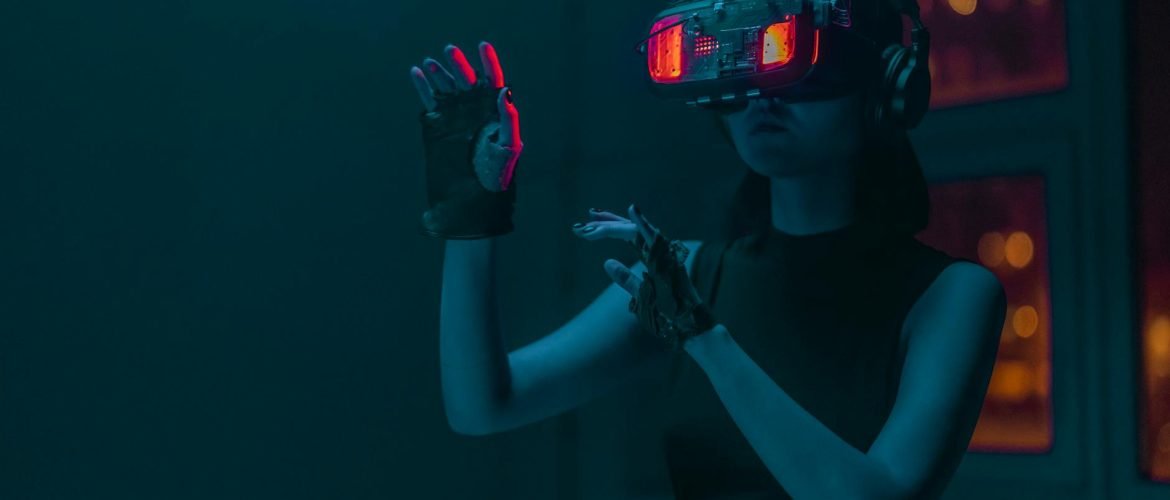Understanding Holographic Technology
Principles of Holographic Technology
Holographic technology operates on the principle of interference patterns, created by the interaction of laser beams. The process involves splitting a beam of light into two parts: the object beam and the reference beam. Here’s a detailed breakdown of the steps involved:
- Beam Splitting: A laser beam is divided into two beams using a beam splitter.
- Object Interaction: The object beam illuminates the subject, reflecting its unique light waves.
- Interference Pattern Formation: The reference beam combines with the reflected object light waves to create an interference pattern on a recording medium.
- 3D Object Reconstruction: Using a 3D object reconstruction device and aerial projection equipment, the interference pattern is transformed into a three-dimensional image.
These interference patterns capture the light waves’ phase and amplitude, allowing for the creation of the illusion of three-dimensional objects in space. This principle forms the foundation of 3D hologram communication and is instrumental in providing immersive experiences.
For more detailed insight on how these processes contribute to holographic video calls, consider exploring our page on holographic video calls.
Applications of Holographic Technology
Holographic technology has a broad range of applications that span various fields, enhancing both user experience and functional capabilities. Here are some key areas where this technology is making significant strides:
| Application Area | Description |
|---|---|
| Promotion and Entertainment | Utilized for creating captivating visual displays in advertising and live performances. |
| Imaging and Medicine | Improves medical imaging, providing 3D visualisations of anatomical structures for better diagnosis and surgery planning. |
| Telecommunications | Enables users to interact with 3D representations of people, enhancing audio-visual communication. |
| Education | Facilitates interactive learning experiences with 3D visual aids. |
| Military Applications | Assists in strategic planning and training through realistic simulation environments. |
| Data Storage | Enhances capacity and security of data storage systems through three-dimensional data recording formats. |
The development of content for holographic displays is a crucial aspect of these applications. This involves creating 3D animations, images, or videos that can be projected, providing a mixed reality experience that can bring educational aids, medical imaging, and even advertisements to life.
Understanding the principles and applications of holographic technology provides a window into the transformative potential of 3D hologram communication. Whether for enhancing remote collaboration, real-time interactions, or creating immersive experiences, holographic technology stands at the forefront of future tech innovations. For more information, check out our section on holographic communication technology.
Holographic Displays in Various Industries
The rise of holographic communication technology has paved the way for innovative uses across various industries. Among the most prominent applications, marketing, and technical information communication stand out.
Marketing and Advertising Applications
In the realm of marketing and advertising, holographic displays are revolutionising how brands engage with their audience. These displays allow for the presentation of complex brand stories and product details in an immersive and visually engaging manner. Multiple people can interact with these holograms simultaneously without needing special glasses, making them highly effective for reaching broad audiences.
One notable example is a hologram campaign run by Coca-Cola at Zurich Main Station, which drew over 18,000 participants and resulted in the distribution of 150,000 product samples. Such campaigns highlight the power of hologram technology in capturing consumer attention and driving direct engagement.
| Campaign | Participants | Product Samples Distributed |
|---|---|---|
| Coca-Cola at Zurich Main Station | 18,000 | 150,000 |
Holographic technology is also making waves in the entertainment industry. Concerts featuring stars from the past performing alongside modern artists is one exciting example. In gaming, developers are incorporating real-life singers into games like Fortnite to create lifelike, interactive experiences (LamasaTech).
Technical Information Communication
Holographic displays are proving indispensable in communicating technical information within various professional fields. For instance, in the medical sector, surgeons utilise holograms for pre-surgical planning, allowing them to visualise the entire course of an operation before making any incision. This capability can significantly improve surgical outcomes.
Moreover, holographic visualisations aid in medical diagnostics by enabling doctors and patients to view 3D images of internal organs, facilitating more accurate diagnoses.
| Application | Field | Benefit |
|---|---|---|
| Surgical Pre-Planning | Medical | Improved surgical outcomes |
| Medical Diagnostics | Healthcare | More accurate diagnoses |
Incorporating holographic displays into various industries not only enhances the communication of intricate information but also provides a dynamic, interactive experience that traditional methods cannot match. For more on how holography is transforming different fields, delve into the possibilities of virtual holography.
Benefits of Holographic Communication
Real-time Interactions and Connectivity
With the advent of 3D hologram communication, real-time interactions have reached a new level of immersion and connectivity. This technology enables you to engage with 3D representations of people and objects, creating experiences that feel real and tangible (ARHT Tech). Imagine attending a meeting where you can see and interact with your colleagues’ holograms as if they were physically present, regardless of your actual location. This capability breaks the boundaries of time and space, significantly enhancing connections and reducing the feeling of distance.
| Aspect | Description |
|---|---|
| Interaction | Real-time, three-dimensional engagement |
| Presence | Feeling fully connected and present |
| Accessibility | Attend meetings from any global location |
For more on how holograms enable real-time interaction, check out our page on holographic video calls.
Enhancing Remote Collaboration
Holographic communication isn’t just about feeling connected; it’s about transforming the way you collaborate remotely. Holographic telepresence technology projects life-like, three-dimensional representations of individuals or objects in remote locations, making remote work more interactive and effective.
This enhanced form of communication is particularly beneficial in industries like education, healthcare, and entertainment. For instance, imagine participating in a global conference where you can interact with speakers and other participants as holograms. This level of immersion can transform remote meetings, making them more engaging and productive.
| Feature | Benefit |
|---|---|
| Immersive Meetings | Engaging and interactive sessions |
| Global Connectivity | Seamless cross-cultural interactions |
| Enhanced Collaboration | Improved interaction in remote work scenarios |
To delve deeper into this subject, visit our article on virtual holography.
This innovative approach can redefine how you engage in remote work, making physical location irrelevant. Thus, holographic communication provides a futuristic, yet practical, solution for overcoming the limitations posed by traditional communication methods, fostering enhanced collaborative environments.
For more insights on the potential of holograms in various industries, browse through our section on holographic displays.
Future of Holographic Telepresence
As the realm of holographic telepresence evolves, significant strides are being made to make 3D hologram communication an integral part of various industries. Understanding the advancements and challenges in this technology is crucial for those interested in its potential applications.
Advancements in Holographic Telepresence
Advancements in holographic telepresence are enabled by the convergence of telepresence and holography, driven by developments in computer graphics, optics, and data transmission. These advancements incorporate 3D capture devices, holographic displays, and high-speed data transmission networks.
Key Advancements:
- 3D Capture Devices: Innovations in 3D capture technology are making it feasible to create realistic and detailed holograms. Off-the-shelf hardware, such as the HoloKinect system, leverages existing technology to provide end-to-end 3D video conferencing (NCBI).
- Holographic Displays: Holographic displays are becoming more sophisticated, with improvements in image quality and resolution. This technology is enhancing the visual experience, making holograms more lifelike and interactive.
- Data Transmission Networks: High-speed data transmission is essential for streaming holographic data with minimal latency. Researchers are exploring adaptive streaming techniques to optimize bandwidth utilization (Medium).
Efforts in educational settings have shown positive feedback regarding the usability and performance of holographic telepresence systems, indicating their potential for broader adoption (Source).
Challenges and Innovation in 3D Teleconferencing
Despite the advancements, there are several challenges and areas for innovation in 3D teleconferencing that need to be addressed to make 3D hologram communication more widespread.
Key Challenges:
- Image Quality: Improving the image quality of holograms is essential to provide a clear and realistic telepresence experience. Enhancing resolution and reducing visual artifacts are ongoing areas of research.
- System Complexity and Cost: The complexity and high cost of existing systems are significant barriers to widespread adoption. Simplifying the technology and reducing costs are crucial for broader accessibility.
- Bandwidth Requirements: Holographic telepresence systems require robust high-speed data networks to stream holograms effectively. Optimizing bandwidth requirements through adaptive streaming techniques is necessary to handle the data load.
| Challenge | Impact | Solution |
|---|---|---|
| Image Quality | Realism and User Experience | Enhanced resolution, reduced artifacts |
| System Complexity | Accessibility and Usability | Simplified technology, cost reduction |
| Bandwidth Requirements | Data Transmission Efficiency | Adaptive streaming, optimized bandwidth |
Holographic telepresence technology has shown promising potential in various pilot tests, such as in education and remote collaboration. The ability to provide an interactive and engaging environment enhances the overall communication experience, making it a valuable tool for the future.
For further information about the role of holographic displays and their applications, visit our article on holographic displays. To explore more about innovative communication methods, check out our content on virtual holography.




